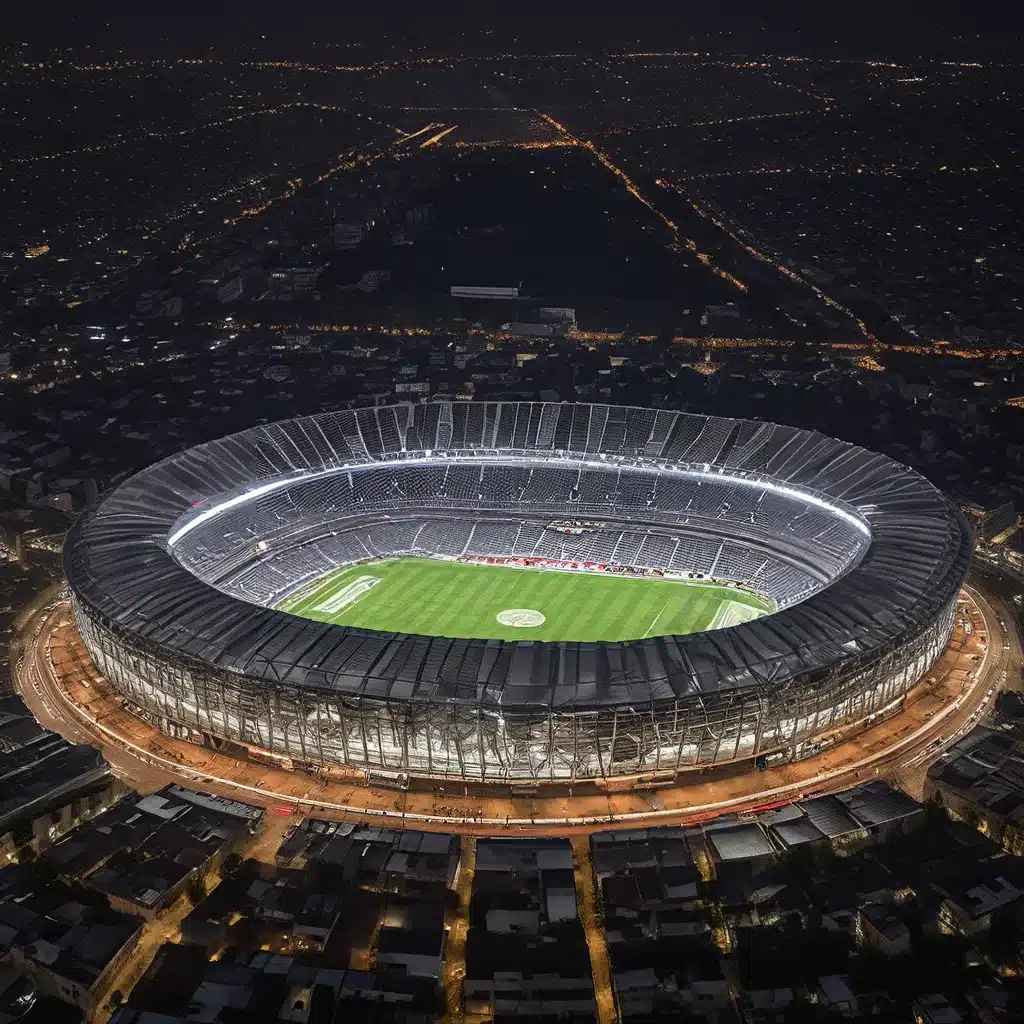
When it comes to iconic sports venues that have captured the world’s imagination, few can rival the Estadio Azteca in Mexico City. This colossal football stadium, home to the Mexican national team and the legendary Club América, stands as a testament to the relentless pursuit of architectural innovation and the power of sport to unite a nation.
The Birth of a Footballing Giant
Opened in 1966, the Estadio Azteca was conceived as a grand stage for the 1970 FIFA World Cup, Mexico’s first time hosting the prestigious tournament. Designed by the renowned Mexican architect Pedro Ramírez Vázquez, the stadium was envisioned as a symbol of Mexico’s burgeoning confidence and cultural identity on the global stage.
The sheer scale of the Estadio Azteca is breathtaking. Boasting a seating capacity of over 87,000, it is one of the largest football stadiums in the world, eclipsed only by a handful of venues like the Rungrado May Day Stadium in North Korea and the Rose Bowl in the United States. However, what sets the Estadio Azteca apart is its architectural elegance and the way it seamlessly integrates with the surrounding landscape.
An Architectural Masterpiece
The stadium’s design is a stunning blend of modernist principles and traditional Mexican aesthetics. The iconic multi-tiered concrete structure is adorned with intricate terracotta details, paying homage to the rich cultural heritage of the Mesoamerican civilizations that once flourished in the region. The use of natural materials and the incorporation of indigenous architectural elements create a sense of harmony between the building and its environment.
One of the most remarkable features of the Estadio Azteca is its sunken design. Rather than towering over the surrounding neighborhoods, the stadium is partially embedded into the ground, creating a more intimate and immersive experience for spectators. This architectural choice not only enhances the stadium’s visual impact but also helps to regulate the temperature and reduce the effects of wind and noise on the playing field.
A Stage for Legendary Moments
The Estadio Azteca has witnessed some of the most iconic moments in the history of international football. In the 1970 World Cup, the stadium played host to the legendary “Game of the Century” between Italy and West Germany, a thrilling match that ended in a 4-3 victory for the Germans after extra time. This match is widely regarded as one of the greatest football matches ever played.
Years later, the Estadio Azteca would once again cement its place in football lore when it hosted the 1986 FIFA World Cup final. In a match that has become the stuff of legend, Diego Maradona scored his iconic “Hand of God” goal, followed by his mesmerizing “Goal of the Century,” leading Argentina to a 2-1 victory over West Germany.
The stadium’s rich history extends beyond the World Cup. It has also been the backdrop for countless domestic league matches, cup finals, and international friendlies, solidifying its status as one of the most revered football venues in the world.
A Symbol of National Pride
The Estadio Azteca is more than just a sports venue; it is a symbol of Mexican national pride and a source of unparalleled community identity. For generations of Mexicans, the stadium has been a place of pilgrimage, where they come to celebrate their beloved national team and the sport that has become so deeply woven into the fabric of their culture.
The stadium’s unique design features, such as the iconic tunnel that players walk through to enter the field, have become integral parts of the match-day experience, creating a sense of ritual and tradition that transcends the boundaries of the sport itself.
A Continuous Evolution
Despite its long and storied history, the Estadio Azteca has not rested on its laurels. Over the years, the stadium has undergone a series of renovations and expansions to ensure that it remains at the forefront of stadium design and technology.
In preparation for the 1986 World Cup, the stadium underwent a major overhaul, including the addition of a second tier and the installation of state-of-the-art lighting and sound systems. More recently, in the lead-up to the 2026 FIFA World Cup, which will be co-hosted by the United States, Canada, and Mexico, the Estadio Azteca has undergone further modernization to enhance the spectator experience and meet the demands of the modern game.
A Global Inspiration
The Estadio Azteca’s influence extends far beyond the borders of Mexico. Its innovative design and commitment to sustainability have inspired architects and stadium designers around the world, who have sought to emulate its unique blend of functionality, aesthetics, and environmental consciousness.
Old Stadium Journey, a leading resource for stadium enthusiasts and sports fans, has long celebrated the Estadio Azteca as a prime example of how stadiums can be designed to enhance the overall fan experience while showcasing the cultural heritage and identity of a nation.
Conclusion: A Lasting Legacy
As the world of football continues to evolve, the Estadio Azteca stands as a testament to the enduring power of iconic sports venues to captivate and inspire. From its grand beginnings as the stage for the 1970 World Cup to its ongoing role as a symbol of Mexican pride and a global inspiration for stadium design, this colossal structure has left an indelible mark on the world of sports.
Whether you’re a die-hard football fan or simply an admirer of architectural excellence, a visit to the Estadio Azteca is a must-do experience that will leave you in awe of the boundless possibilities of stadium design and the profound impact that sport can have on a nation’s identity and cultural heritage.

